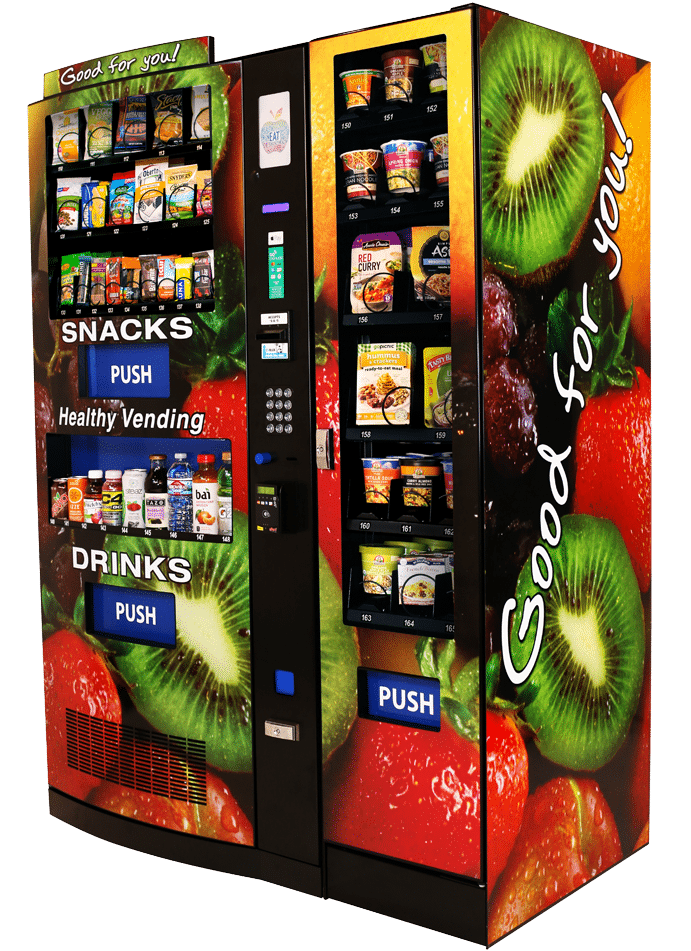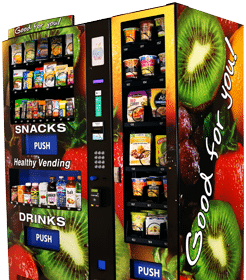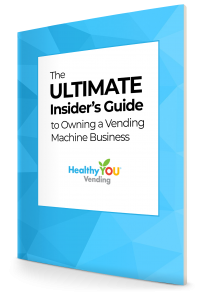How to Start a Vending
Machine Business
The Complete Guide
Looking to get into the vending machine business? Want to learn all the ins and outs of how
to make passive income while enjoying incredible freedom in your life?
You’ve come to the right place.
We have helped more people start a healthy vending business than all of our competitors – combined
Let’s face it, while it sounds simple, learning how to start a vending machine route can be a bit overwhelming. Luckily, we’ve broken it down into easy to follow steps.
Here are the six steps to starting a vending machine business.
There are a ton of great reasons to get started now.
The most common reasons why so
many entrepreneurs get into the vending business include:
And that’s what this Guide is all about.
You can gain more control over your life, enjoy more flexibility, achieve a higher income potential, and secure your family’s future. And you don’t have to worry about making the wrong business start-up decision and falling flat on your face.
All you need to do is read this guide, understand what starting a vending machine business is all about, and determine if this business is aligned with what you want to do and who you are. (Hint: the first question isn’t how, it’s why.)
But first…
Before you even start researching how to buy vending machines, think about this:
What is a successful vending venture really built on? Selling product? Minimizing cost? Locking down every location known to man?
Actually—and perhaps surprisingly— the answer isn’t any of these things.
Rather, any and every successful vending business is built upon an unwavering dedication to providing value at every step.
Some people call this “customer service.” We call it being a “WOW Technician”; that is, someone who can methodically and consistently deliver service, products, and results that leave locations and customers saying “WOW!”
It’s a simple concept: value received always follows value provided.
This guide will give you the necessary skill set to make this happen. To receive the value you seek, it will be on you to meet this challenge and “walk the talk.”
In This Guide You’ll Learn
Why Vending?

Before you begin any business venture you must know why you’re doing it
Vending Machine Locations
 The secret to finding and securing contracts with only the most profitable locations for your vending machines
The secret to finding and securing contracts with only the most profitable locations for your vending machines
Customer Service

How to create long lasting relationships with your accounts so that you keep their business for life
Startup Strategy
![]() Discover the different types of vending business startup options out there and which one is the best suited for you and your appetite for risk
Discover the different types of vending business startup options out there and which one is the best suited for you and your appetite for risk
Who Are We?
HealthyYOU Vending is a nutritional distribution platform dedicated to making healthy snacks, drinks and food products available to people across North America and to the success of our Operators.
The healthy vending movement has been increasing rapidly in the last decade and there are no signs of it slowing down.
Why We Wrote This Guide
This guide will give you a detailed resource so you don’t have to make the same mistakes they did!
With the huge technological advancements made over the last decade, the vending industry has also seen quite a bit of improvement in technology…but nobody seems to be talking about it.
These amazing new technologies are aimed to help you, the vending business owner, and you need to know about them if you want to get ahead of your competition.
As the healthy vending experts, we know a lot about this stuff. We put this complete Guide together to make it easier for you to learn not just how to start a vending machine business, but all the options available at your fingertips to improve your chances for success in it.

Before You Get Started, Consider This
- There is an estimated 4.6 million vending machines in the United States right now
- Sales of healthier snacks outpace traditional snack foods (i.e. junk food) by 3x, but most vending machines operators still stock their machines full of traditional junk food
- The first American vending machine sold gum. The first English vending machine sold apples and postcards.
- 55.1% of vending machines are placed in offices or manufacturing buildings
- You can sell just about anything out of a vending machine. Seriously.
What Does a Typical Day Look Like When You Own a Vending Business?
This is a question that a lot people ask before they get into the nitty-gritty of what it takes to run a successful vending machine business.
Here’s a quick overview:
Your day will typically start by hopping onto your computer to view the backend remote monitoring system. This technology gives you an up-to-date report to see which locations are low on product and need to be restocked.
After taking a look at your machine inventory report, the next task is to print out reports that tell you how many of each product you need (called “Pick Lists”), load your products into bins, and pack them up into your vehicle.
Then you’ll hit the road where you get to interact with your customers, provide a couple of “wow moments”, and of course, restock and service your machines.
Here’s a typical service schedule:
- Empty the cash box
- Refill the coin mechanism with dimes, nickels, quarters, and dollar coins
- Restock all products in the machine
- Wipe down the glass on the front of the machine
Once you’ve completed your onsite tasks, it’s time to get back on the road and visit your next location!
After servicing your route for the day, other daily activities might include reordering products, accounting activities, and inventory management.
The Top 5 Facts and Fallacies About This Business
Other Frequently Asked Questions
How often will I need to service my machines?
If you are in high-traffic, high-producing locations, you will typically service your machines once per week. Servicing a machine does not require a lot of time (typically 15 minutes or less), but maintaining a well-stocked and clean machine is an absolute must. Otherwise, your sales will suffer due to the machine not functioning properly.
What type of licensing, paperwork and insurance will I need?
While our program includes a fire, theft and vandalism plan we highly recommended you purchase an umbrella insurance policy for your business. More times than not, the best options you can find is to go through local insurance agents.
While the decision is ultimately yours, the majority of vending operators establish their business as an LLC. You can use your personal lawyer or accountant to get this setup, or (if you’re more savvy) go through a service such as LegalZoom.
Additionally, please be aware that there are benefits of registering your business under one of the following categories. A basic internet search will yield all of the possible benefits of registering your LLC as:
- A small business (through the SBA)
- A veteran-owned business
- A women-owned business
- A minority-owned business
- A business owned by someone with a disability (deaf, blindness, etc.)
This is not an extensive list – but should certainly get the wheels turning!
Do I need a truck or large vehicle to service my machines?
Starting out, a dedicated service vehicle will not be necessary. You can use your personal vehicle. You can do this because you will only put in your vehicle the products you need to stock each machine. Using eManage, your vending management software, you will be able to print a report of exactly what is needed to fill any machine at any time. One you have a very large business, you may eventually need a larger vehicle to transport larger quantities of products.
Do I have to pay a portion of my sales to the business or location where my machine is placed?
The majority of locations expect to receive some type of commission from your vending sales in exchange for “renting” you real estate from which to sell (especially if they have received commissions from their previous vendors).
You can typically negotiate a 15%-30% commission rate, depending on the location type and foot traffic. Experienced vending business owners use the tactic of offering a higher commission rate in exchange for exclusivity within a location – meaning their machines face no competition onsite.
What are the best types of locations?
You can learn more about how to land the most profitable vending locations in Chapter 3.
Why is that, you ask?
Here are the main reasons:
- Schools have consistent and static foot traffic (students go to school 5 times per week and it’s the same students who go to school everyday, so they know what you sell in your machines).
- Kids love buying from vending machines – it’s a fun experience for them.
- Students don’t usually plan ahead to bring snacks with them to eat throughout the day.
- Parents give their kids money to buy snacks from school. A lot of the time, those snacks end up being from the vending machine.
Some other good location types are offices/office buildings, gyms/recreation centers, YMCAs, and hospitals.
How profitable is a vending machine business?
The profitability of your vending machine route will depend on the locations you place your machines in (that’s why we dedicated an entire chapter to this topic) and the time and effort you put into your new business. We will show you how to use eManage, your vending management software, to help make sure each machine is filled with the best selling products for their individual locations.
In addition, we’ll show you the best resources for products. Lower pricing on the products you buy will give you higher margins on each product sold, meaning more profit for your business.
Here’s What You Need to Know
Why Do You Want To Start a Vending Business?
Before you know what you want, you have to answer why you want it. In this chapter, we’ll show you the most important questions to ask yourself before moving forward with your research on starting a vending machine business. This is definitely an important chapter of the guide that you don’t want to skip over.
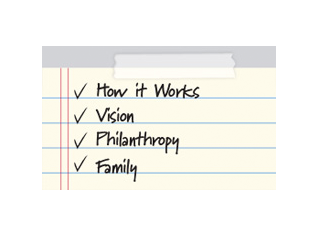
How to Choose The Right Vending Machine Equipment
There are several different types of vending machines sold by healthy vending companies. We are the only company who designed a machine specifically for the healthy vending market. All others use a standard soda/snack machine.
How to Secure The Most Profitable Vending Machine Locations
Location, location, location! Your locations are the most important part of your vending machine business. Choose the wrong location type and you’re looking at a long road of financial pain. Follow these essential tips to make sure you’re securing only the best locations for your vending machines.

Source The Best-Selling Vending Machine Products at The Best Price
Since you’re selling products in high volume, the vending business is all about margins. This chapter will show you the best and most affordable sources to get wholesale prices. We’ll also cover the new nutritional standards in schools and how you can make sure you’re in compliance (and avoid any penalties that could cost your business a lot of money).
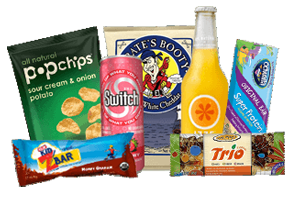
Provide Amazing Service to Keep Your Vending Accounts for Life
When you know how to provide excellent service to your locations, they’ll want to work with you for a long time. They’ll also be much more patient and understanding when unforeseen issues occur (i.e. coin jams, technical issues, stuck products, etc). Customer service in the vending business is equal parts machine maintenance and knowing how to communicate.

Choose The Right Startup Option For You
There are several different ways you can actually start a vending machine business including joining an established business opportunity or launching a business on your own. Now that you know what it takes to get this type of business up and running, it’s time to evaluate your startup options. There’s no “one-size-fits-all” here either. It comes down to what makes sense for you.

How to Start a Vending Machine Business – Part 1:
Why Do You Want to Start a Vending Machine Business?
It all starts with your “WHY”.
Perhaps you’ve done a little homework and you think the $42 billion-dollar vending industry might be the right fit for you. Maybe vending sparked your interest because you heard it has less overhead, no rent or electricity bills, and more flexibility than businesses in other industries. Perhaps you like the idea of a permanent escape from the office where you can interact with your neighbors and make an impact on your community.
Before you continue down the wrong path, it’s important to know why you want to get into this business. The last thing you would want to do is invest a lot of time and money, work your tail off for 5 years, and then suddenly realize that you made the wrong decision because it doesn’t actually align with your long-term goals.

The Why Factors
There are a lot of factors that come into play to start and manage a successful vending machine business – a lot more than most people originally think. Naturally, there’s a lot of discussion surrounding which vending strategies are best and which ones to avoid — for example, should you go it alone, buy an existing route, buy into a business opportunity or a franchise?
Ironically, it seems like the only thing people aren’t talking about are THE WHY FACTORS.
If you really do homework, you can find successful people in every one of these categories.
This prompts an important question. Given the same material, strategy, and support, why does one person succeed while another person fails?
One reason: they forgot to account for their why factor. In other words, they chose a strategy that was misaligned with their ultimate goals.
Ask Yourself These Critical Questions:
 What’s My Purpose Factor?
What’s My Purpose Factor?
What do you want your healthy vending business to accomplish — personally, professionally, and societally? Understanding what you want to achieve is crucial to your ability to choose the best business strategy for you.
Here are a couple “purpose factor” examples:
- More flexibility in your schedule
- More control over financial future
- Better ability to provide for your family
- Desire to help people/make a difference
- More time with your family
- Retirement Income
The list goes on. Before deciding anything else, ask yourself what is your end goal (i.e. purpose factor)?
This will make your decisions down the road easier and keep you focused when….


 What’s My Time Factor?
What’s My Time Factor?
Determine how much time you have to invest in your business. Most people will start one of two ways:
1. They’ll quit their job and jump into the business full-time. Usually people in this scenario have built up enough savings that they can manage without the income from their job for 6-12 months.
2. They need the income from their current job, so they start a vending business by working on nights, weekends, and during lunch breaks.
Realistically, do you have the available time to do all of that work yourself? Does that time-investment align with your motivation for starting this business? Do you need a partner? Would you prefer some business support?
Consider this example: you choose to buy and self-operate a 50 machine vending route because the numbers make sense and it’s a smart business decision. However, the main reason you wanted to start a business was so that you could spend more time with your family. Now you are the owner of a lucrative vending business that keeps you away from home 80 hours a week. Have you accomplished what you wanted? If the answer is “no”, then you need to hire a route driver to handle the day to day of your route.
Make sure to understand your time-investment level BEFORE you start evaluating business opportunities.
 What’s My Money Factor?
What’s My Money Factor?
Everyone who gets into this business (or any business) will have a level of financial investment that they’re willing to put into it. So you’ll need to determine how much you’re willing to invest in this new business of yours.
Note that this answer will depend on a couple of other factors. Generally speaking, the more support offered by a business opportunity, the more expensive. And vice versa. But, that investment might be more beneficial for you, depending on your why, and your time-investment level.
In other words, don’t make the mistake of choosing a business option solely based on your initial expenses without considering the other important factors. Understand the difference between what you want to invest and what you can invest. Write down both numbers and keep them in mind as you continue to read through this guide.
It’s important to understand your answers to these questions before analyzing business opportunities and franchises. There are a lot of factors to consider, but the process will be a lot easier if you know what you want and what you need to start this business.

Key Takeaways
The New Era of Vending
Take a look at the industry to get a better idea. Standard vending machines, stocked with candy, junk food or soda, are no longer the only options available. Healthy vending machines, fresh-food dispensing machines, and other types of equipment are part of the mix.
Many vending services offer a variety of machine options so they can supply each location with the options they want. This goes beyond just the products.
Not everyone carries cash nowadays. Many people carry only plastic. Therefore, many types of vending machines now include the ability to pay with a credit or debit card, and even smartphones.
Your ability to supply a full range of options to a location will give you an edge when securing the deal, and it’s also crucial to making sure the machines get used regularly.
Credit Card Readers & Remote Monitoring
Most new vending machines include credit card readers equipped with remote monitoring. This can come in handy because you receive a complete overview of your exact sales figures and product inventory, all while improving customer convenience.
Plus, you can log-in from home and see what is being sold in your machines…which also gives you intelligence on when to go and restock your machines. This is incredibly valuable information to have every day. It saves trips, fuel, and time.
If you think credit card readers aren’t necessary on your vending machines, you may want to think again. Vending Market Watch recently found that average annual cashless sales have increased 28% over the last year, and that the average consumer is spending 32% more when they pay with credit versus cash.
when they pay with credit vs. cash.
Key Takeaways
How to Start a Vending Machine Business – Part 3:
How to Secure The Most Profitable Vending Machine Locations
Like they say in real estate, the most important thing is location, location, location!
Locations with a lot of foot traffic are the best locations to target for your vending business.
In this chapter, we’ll discuss how to find the most profitable vending machine locations using a proven system.
Essential Tips for Acquiring
Great Vending Machine Locations
 Generate high quality leads
Generate high quality leads
The vending machine business is essentially a “location generation” business. While there are many other things involved, you won’t get very far unless this first part is taken care of.
As with many aspects of growing your business, lead generation is not a “one and done” step, but rather something that is both ongoing and cyclical in nature. Simply put: lead generation never ends!
Proper lead generation is a combination of prospecting, finding and contacting leads through specified research of who could benefit from your business, and marketing/promoting your business in a way in which leads find you.
When tied together and used effectively, setting vending machine placement meetings with qualified locations will be as efficient as possible.

INSIDER TIP: You’re NOT in the vending business. You are in the lead generation business—specializing in vending.
 Have a plan
Have a plan

For example, would the location’s patrons want snack and drink machines, or just snack machines? Would the location be interested in a coffee vending machine?
“By failing to prepare, you are preparing to fail.”
– Benjamin Franklin
 Qualify Leads
Qualify Leads
Good questions to ask include:
- What is the location’s estimated daily foot traffic
- Do they currently provide vending or food service options? If so, who is their vendor?
- Do they have a contract with their current vendor? If so, how much longer are the locked in for and how happy are they with their current service?
- Do they currently receive a commission from vending machine sales? If so, how much are they receiving?
- Additional services being provided by their current vendor?
These are all of these vital pieces of information should be collected during the discovery phase. Record every detail.
Avoid asking open-ended questions. Rather, ask questions that help you collect the simple, yet vital information pieces that are fact-based.
![85 (2) [Converted]](png/85-2-converted.png)
 Engage
Engage
Variety creates novelty, and your outbound communication model should be geared to capitalize on that one very small, yet very important concept.
As the saying goes, “before people will care about how much you know, they must first know how much you care.” Accomplishing this requires you to take the time, before you begin discussing the specifics of business, to establish a level of trust and personal connection.
The goal is to cultivate real, meaningful relationships that lead to customers wanting to do business with you because of who you are, not feeling obligated to do so because of what you offer.
INSIDER TIP: Write a value proposition that shows who you are and what you’re trying to accomplish. Make sure every piece of communication you have with potential locations includes this message.
 Scheduling Appointments & Attending Meetings
Scheduling Appointments & Attending Meetings

Once you get them on the phone, the best strategy to set the appointment is to come prepared to deliver information that is highly personalized, relevant, and powerful. You’ve connected personally, you’ve qualified them, you know their pain points, you’ve figured out exactly what they’re looking for and WHY they’re looking for it, and you know any limiting factors they may have.
Now it’s time to make your program work for them. When done properly, there should be no reason for your customer to hesitate.
INSIDER TIP: Follow-up is crucial. There are plenty of people in this world who can sit down at a desk and talk to a stranger about a vending program. But there are very few people in this world who can remember, and make the effort, to forward a copy of a hiking trail that their customer might like, or send a keychain with the contact’s favorite sports team’s logo on it. These details don’t happen by chance but they do make all the difference in the world.
 Handling Objections
Handling Objections
Getting there requires you to activate the second level of questioning, which is known as Iceberg Questioning.
During this line of questioning, you are able to get to the core of what any customer truly desires, and what they cherish.
This will provide invaluable insight into what pain point your vending business can solve. This can come in very handy for objections down the line.

 Closing The Deal
Closing The Deal
INSIDER TIP #1: Make sure to come with all the appropriate material. Seems silly to even say, but you’d be surprised how many people don’t check to see if they have all the supplemental materials they might need. The machine is great to talk about, but it’s even more impressive if you have a one-page description to hand them or a life-sized banner to pull out.
INSIDER TIP #2: Use Social Proof. When people can see that others in their same situation have had success with what you’re proposing, they are prone to buy. Social proof also provides you with a network of success stories to fall back on when growing your business. Use those successes as much as possible!
INSIDER TIP #3: Don’t Expect A Big Finale. When most people think of “closing” a machine placement meeting, they imagine it’s this big dramatic moment at the end where someone stands up and shouts, “So, are you in or out?!?” This isn’t the case. Ask questions throughout the meeting. Make sure they understand your proposal, and get small confirmations that they could benefit from each aspect. This method gets the location to (a) close themselves and creates their own “buying” desire and (b) will show you what their primary hesitation points might be.
![190-[Converted]](png/190-converted.png)
All in all, provide value and make an impression.
 Referrals
Referrals

Referrals are often the quickest and easiest way to expand your business. There is no better marketing than word-of-mouth (having someone else rave about and recommend your vending services to a potential location). In general, the location leads that sign agreements with the least amount of effort and time spent in the sales process are from referral programs.
Key Takeaways
How to Start a Vending Machine Business – Part 4:
Choosing The Right Vending Machine Products To Maximize Revenue
Perhaps this is easier said than done.
Every location is different – with different customer demographics, traffic patterns, and unique requirements – and must be treated as such. There are a plethora of items on the market, and multiple factors to consider when creating a product mix – including a consumer base that increasingly values health and nutrition. Success depends on finding a mix that balances these factors in a way that meets the needs of your location.
Luckily, we’re here to help you navigate through this confusing terrain.

Trends in Healthier Eating

As a result, Healthy Vending is a growing category, and a serious option to consider if you want your business to be around and thrive in the long therm.
That being said, here are the biggest factors to consider when sourcing products for your machines.
5 Factors to Consider When Sourcing Products

Smart Snacks in School
In June of 2013, the USDA announced the Smart Snacks in School initiative, new federal guidelines that limit the amount of calories, fat, sugar, and sodium in snacks sold in the more than 100,000 schools that participate in the National School Lunch Program.
Among the requirements is the mandate that all foods in school must be whole grain rich, meaning that 50% or more of the ingredients must be a whole grain (or whole grains must be the first ingredient listed), and snacks must be 200 calories or less.
Luckily, healthy vending businesses make it easy for you to create a product mix that kids find delicious, and that meets these new guidelines.
Where you can find the best products
When it comes down to it, how you choose to source products will depend on the product type, availability, and your preferences.
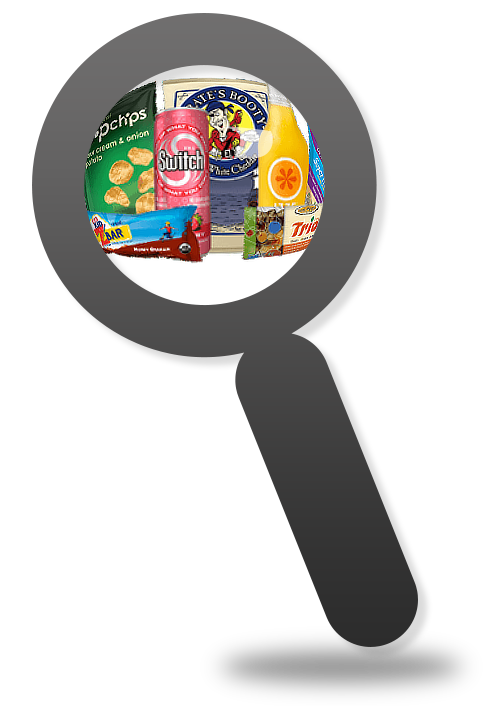
You’ll need to compare prices from each distributor to see where you can get the best pricing on each brand.
When you start purchasing enough products through a certain distributor, you can leverage your pricing at other distributors to negotiate better pricing.
Here are some of the most popular ways to source products:
- Order through United Natural Foods Inc (UNFI). They have the largest selection of healthy food products in the nation. They do have minimum order amounts but we can connect you with a company that can help you with products until you can meet those minimums.
- Purchase at Costco or Sam’s club. These superstores generally have cheaper prices than at most retail locations. Their selection is limited however and you may end up making less money by selling what is most convenient rather than what is most wanted by people using your machines.
Insider Tip: Hold a Sampling Event at Locations
Sampling events serve a two-fold purpose – first, they’re a great way to help get the word out about your vending program, and build anticipation and excitement for your machine.
Equally as important, a sampling event gives you the opportunity to gauge the taste profile of your average consumer. Partner with a variety of vendors to offer free samples, and see what does and doesn’t work. Armed with this knowledge, you’ll be better able to create a product mix that your consumers will love.

Key Takeaways
How to Start a Vending Machine Business – Part 5:
Providing Amazing Service to Keep Your Vending Accounts For Life
So you’ve landed some locations, you’ve purchased the exact type of vending equipment you need to accommodate the location’s needs, and you’ve officially opened for business.
Now what?
Besides continuing to find more locations, the real work has just begun! It’s time to provide the excellent level of customer service that you promised your location.
When your customer service exceeds expectations, asking for referrals becomes easy. Plus your location won’t even think twice when it comes time to renew your contract.
There are 4 areas where you should be providing above and beyond service for your customers.

Machine Maintenance
Vending machines are like cars. Take care of them and do preventive maintenance, and they will last a long time. When you first start your vending machine business, you might want to lean on the expertise of an experienced vending professional, to help you out. As you learn the business, you will become that vending expert. In the long-run, knowing how to maintain your own machines will save you both MONEY and your REPUTATION with the location. 
Product Optimization
Show your locations that you’re constantly thinking about the well-being and happiness of their patrons by optimizing the products available in your machines. Rotate out the poor sellers for new products. Try different brands, placements within the machine, types of food or drinks, etc.

This is good for your pocket AND helps keep the location happy.
Engage Directly With Customers
You could do the bare minimum and just keep your vending machines stocked.
But that’s not going to get you a lot of referrals or help you improve your partnership with the location.
We call some of these fun extras, “Buzz Boosters.” Again, they help you look good in the eyes of your location and are fantastic marketing techniques to drive sales.

– Hand out samples of products that are either new or don’t sell well to get those products moving. Try bringing a whole case of that snack to the school lunch period and hand out free samples of it. Students go nuts over this!
-Be friendly with the employees at your locations and talk to any of their guests.
-Ask for feedback while restocking and respond accordingly.
3.Tape a $5 bill to the back of one of the snacks and put a large sign on the machine saying, “One of these products has $5 taped to the back. Will you be the lucky winner?”Communication
Communication is VITAL in any business relationship. So treat your
customers like they’re a business partner.
Be proactive.
Instead of waiting for your location to reach out to you with feedback or comments, reach out to them. Ask them what requests they have just a few weeks after you launch. Check in with them periodically and put systems in place that make it easy for them to get in touch with you with any questions or concerns.
#Vending Tip: Treat your customers like business partners. Be proactive in your communication. Click To TweetBe responsive.
Since you can’t anticipate everything that your location will need, inevitably you will get questions or concerns from your location. Answer them in a timely fashion. Every time.
A good rule of thumb is to let your locations know you will get back to them within 24 hours of them contacting you. That way, they know you’re accessible but you won’t have to respond immediately.
Stay in touch… but don’t inundate them.
Let your locations know that they’re important to you and that you’re grateful for the relationship by periodically dropping off new snacks that you’ve been stocking, giving them a holiday gift bag, sending them a birthday card, or just stopping by while restocking to say a quick hello. As decision makers are very busy though, be sure not to overwhelm them with your good intentions. There are a lot of people that want to see them each day.
Get feedback.
Make it clear that you want feedback in order to make this the best fit possible. That said, when you do receive feedback, respond to the reasonable requests in a timely fashion.
Feedback is the easiest way to learn more about what your accounts want. And when you provide them with what they want, that’s how you keep your vending accounts for life.
Be personable.
Expert vending tip: Hand-deliver your commission check to the decision maker and include a hand-written thank you note.
Do this every time, as it’s the personal touches that count. It’s these little things that go a long way in the eyes of your accounts.
Key Takeaways
How to Start a Vending Machine Business – Part 6:
Choose The Right Vending Machine Startup Option
A lot of people struggle with that question because they don’t frame it correctly. It’s not that one startup option is necessarily better than the others.
The question you need ask yourself is which option makes the most sense for you.

It really boils down to these main points:
Let’s look at the various options available for you to
get your vending business started.
Your Vending Business Startup Options
#1 Do It Yourself
If you have a lot of business and sales experience, then you may decide to try and start your own vending business.
You’ll be responsible for locating a reputable machine supplier, training yourself, and conducting your own sales process to land locations. Without experience in vending, this process may take up to a year before you get up and running with a couple of machines.
In other words this option can be incredibly time consuming for a new entrepreneur, and there’s a lot of risk involved. That being said, the “do it yourself” method can also be the most affordable.
This vending business route would be a great idea for someone with a strong business background – someone who is fearless (not afraid to negotiate to find optimal locations), and someone who is willing to put in a lot of hours initially to get their business off the ground.

Pros
- Cheapest way to get started
Cons
- High time investment needed to get started
- Need to be good at sales & negotiation to make this work
#2 Buy an Existing Vending Machine Route
There may be other vending machine business owners in your area that are looking to sell their existing business.
The major advantage here is that you have a ready to go business – no need to purchase your own machines or find locations. The disadvantage is that you’re buying old equipment.
Generally speaking, this option requires less upfront time, but depending on the size and quality of locations, it can be the most expensive option. Make sure to thoroughly research the existing business and analyze the current sales figures to ensure that the money is worth the price.
The option of buying a vending machine route would be an optimal choice for someone with advanced business skills who has or can finance $150,000 to $500,000.

Pros
- No need to purchase your own machines
- No need to find locations
Cons
- Buying older and possibly out dated equipment
- Coming into expiring contracts or no contracts at all
#3 Buy a Franchise or Business Opportunity
You can also buy into a franchise or business opportunity. In this situation, you get to partner with a company that has an established brand, a proven business model, and a dedicated sales team to help you secure vending locations.
In most situations, you also get machine training and sales support (varying on the opportunity) throughout the entire location acquisition process, and on the franchise side this will generally extend throughout the life of your business.
You also benefit by joining a community of other vending business owners. Each franchise/bizopp has a forum or online community where entrepreneurs from across the country get to share tips and best practices.
If you’re looking to start a vending business with the most help and support possible, including significant assistance with securing vending locations, a franchise/bizopp is the best option out of the three.

Pros
- Turnkey startup model
- Branding/Marketing power
- Lifetime support
- Expert location acquisition services
Cons
- Typically require higher initial capital investment than starting a vending business solo
- Ongoing fees/royalties for business support (franchises and some biz opps)
Key Takeaways
